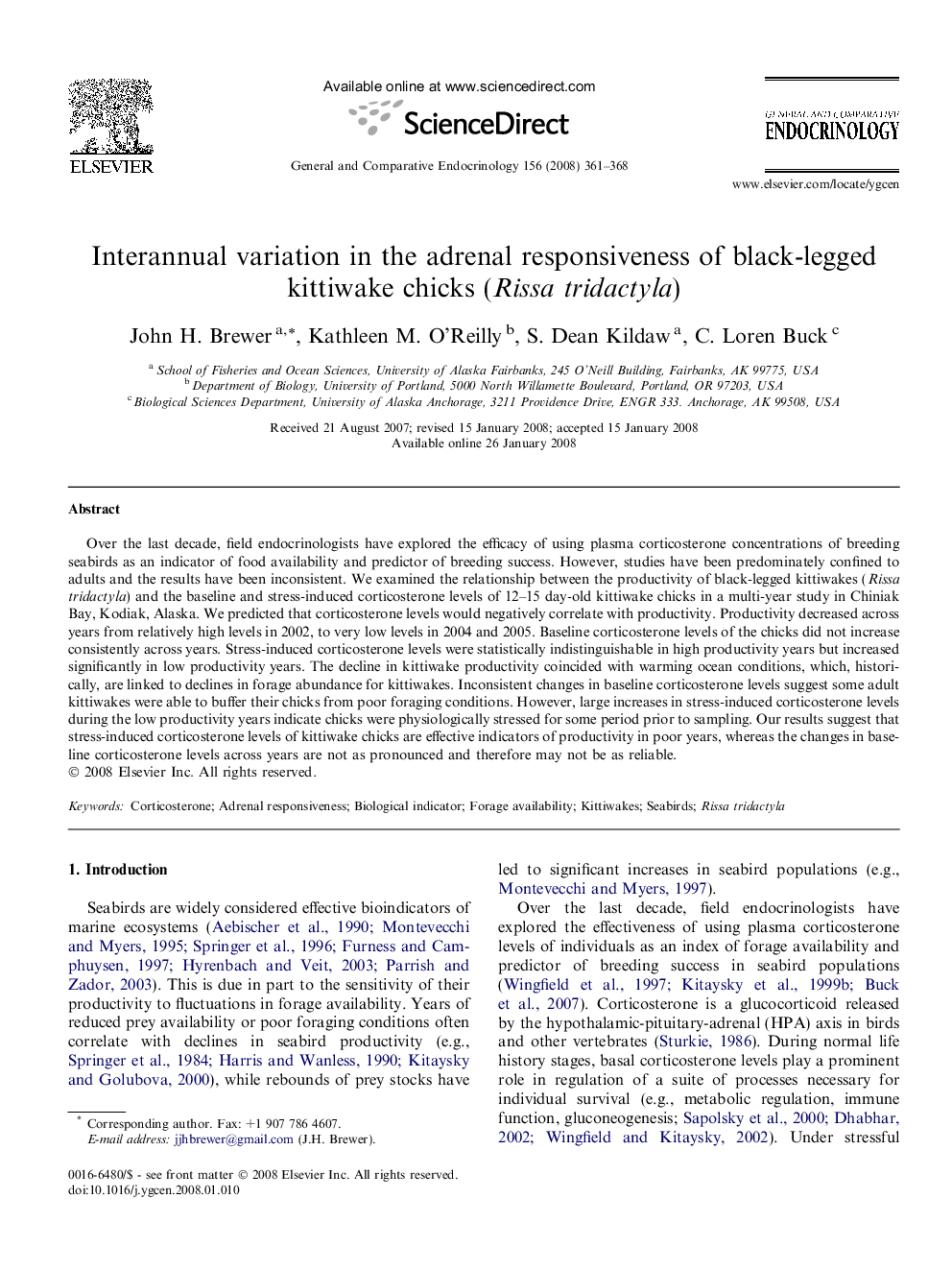| Article ID | Journal | Published Year | Pages | File Type |
|---|---|---|---|---|
| 2801652 | General and Comparative Endocrinology | 2008 | 8 Pages |
Abstract
Over the last decade, field endocrinologists have explored the efficacy of using plasma corticosterone concentrations of breeding seabirds as an indicator of food availability and predictor of breeding success. However, studies have been predominately confined to adults and the results have been inconsistent. We examined the relationship between the productivity of black-legged kittiwakes (Rissa tridactyla) and the baseline and stress-induced corticosterone levels of 12-15 day-old kittiwake chicks in a multi-year study in Chiniak Bay, Kodiak, Alaska. We predicted that corticosterone levels would negatively correlate with productivity. Productivity decreased across years from relatively high levels in 2002, to very low levels in 2004 and 2005. Baseline corticosterone levels of the chicks did not increase consistently across years. Stress-induced corticosterone levels were statistically indistinguishable in high productivity years but increased significantly in low productivity years. The decline in kittiwake productivity coincided with warming ocean conditions, which, historically, are linked to declines in forage abundance for kittiwakes. Inconsistent changes in baseline corticosterone levels suggest some adult kittiwakes were able to buffer their chicks from poor foraging conditions. However, large increases in stress-induced corticosterone levels during the low productivity years indicate chicks were physiologically stressed for some period prior to sampling. Our results suggest that stress-induced corticosterone levels of kittiwake chicks are effective indicators of productivity in poor years, whereas the changes in baseline corticosterone levels across years are not as pronounced and therefore may not be as reliable.
Related Topics
Life Sciences
Biochemistry, Genetics and Molecular Biology
Endocrinology
Authors
John H. Brewer, Kathleen M. O'Reilly, S. Dean Kildaw, C. Loren Buck,
